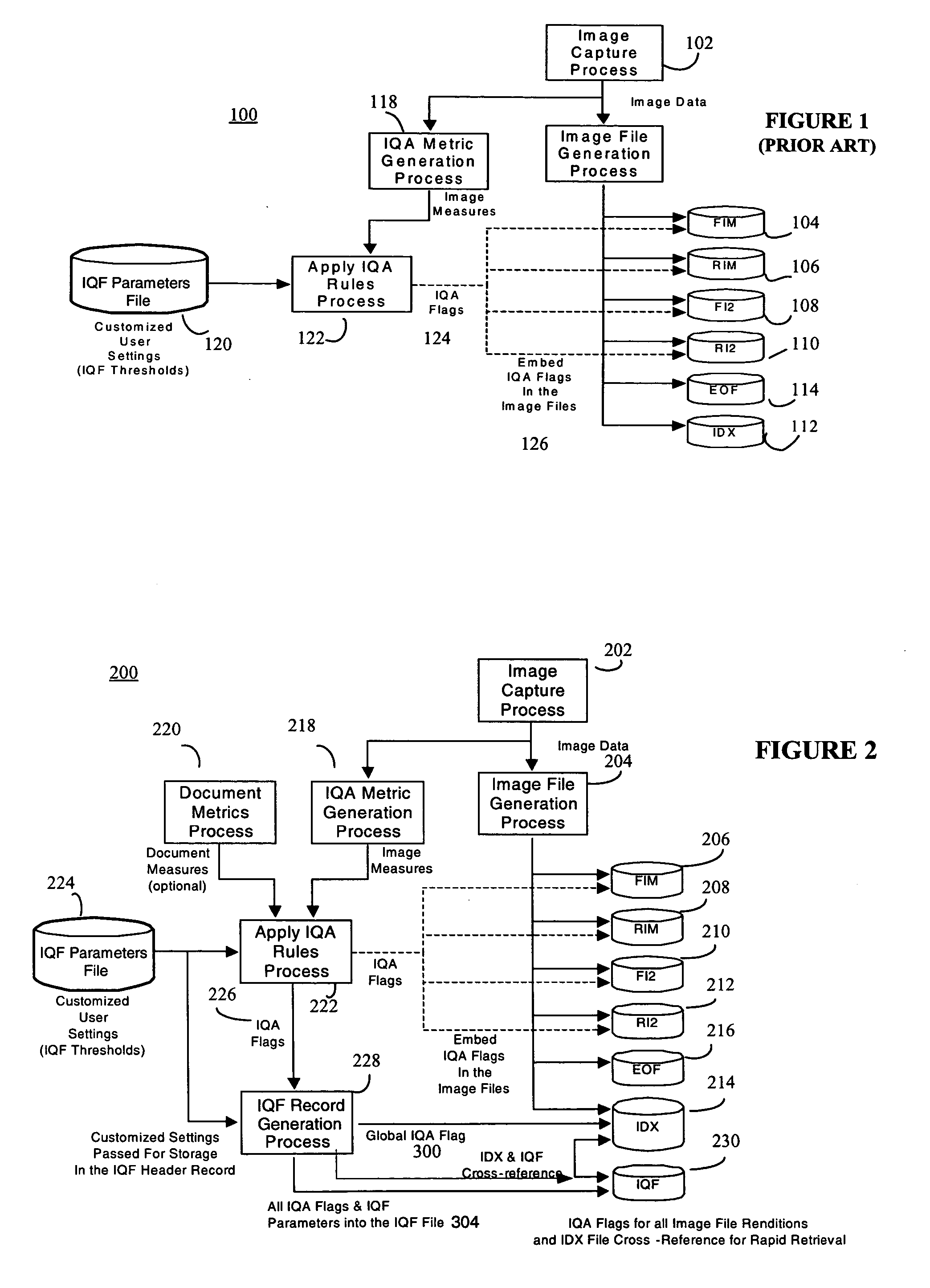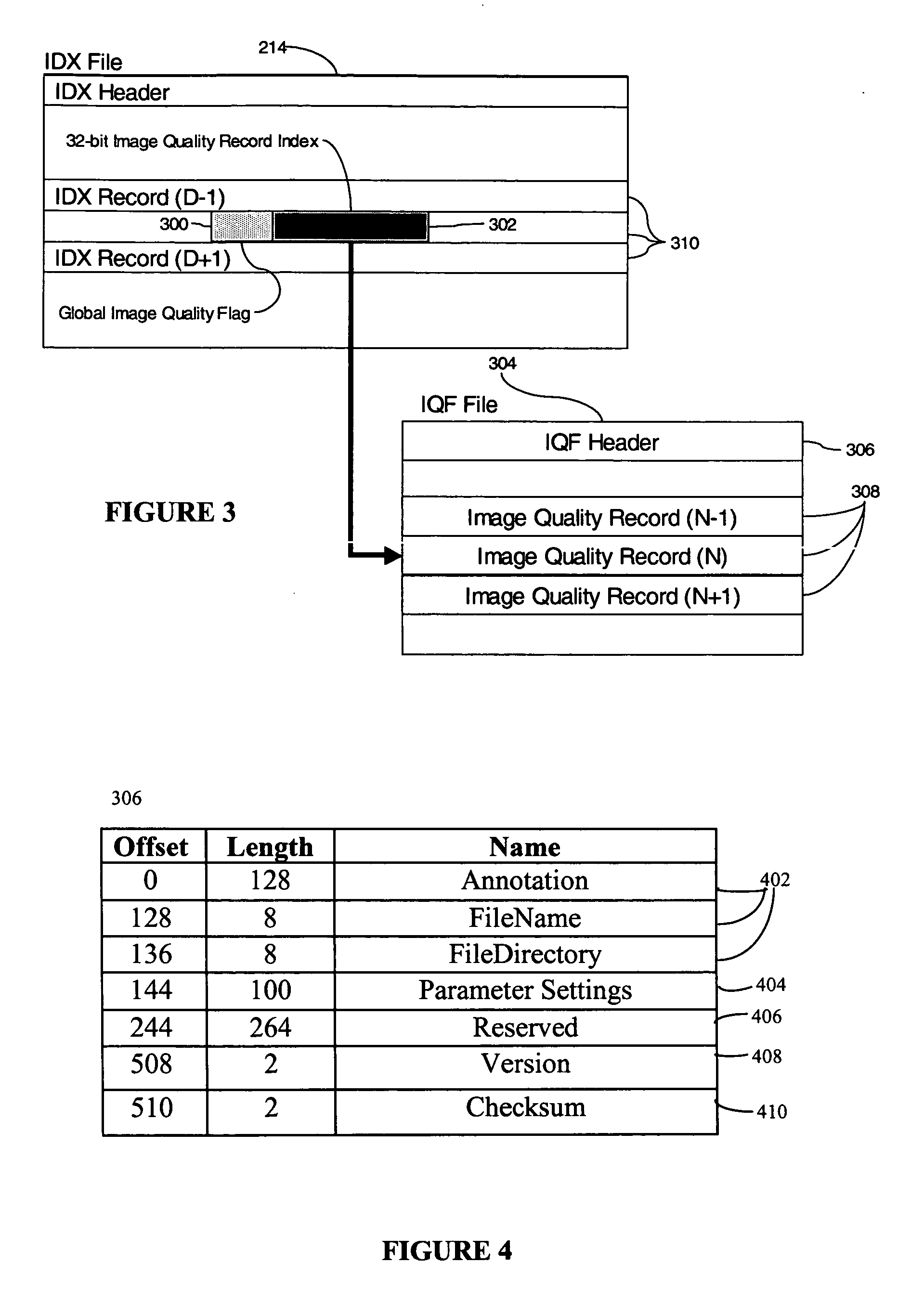Image quality assurance system and methodologies in a post-image capture document processing environment
a document processing environment and image quality assurance technology, applied in the field of image quality assurance, can solve the problems of image quality, poor contrast, and reduce the legibility of documents, and achieve the effect of improving image quality assurance systems and methodologies
- Summary
- Abstract
- Description
- Claims
- Application Information
AI Technical Summary
Benefits of technology
Problems solved by technology
Method used
Image
Examples
Embodiment Construction
[0048] Preferred features of selected embodiments of this invention will now be described with reference to the figures. It will be appreciated that the spirit and scope of the invention is not limited to the embodiments selected for illustration. For example, although the present invention will be described with reference to the X9.37 standard and its progeny, as this appears to be the preferred financial image interchange standard, it will be appreciated that the invention is not so limited and that is applicable to any automated image quality assurance implementation regardless of the image interchange standard that is ultimately adopted. Also, it should be noted that the drawings are not rendered to any particular scale or proportion. Finally, it is contemplated that any of the configurations and materials described hereafter can be modified within the scope of this invention.
[0049] As set forth above, although the proposed solutions to his problem have included appending or em...
PUM
 Login to View More
Login to View More Abstract
Description
Claims
Application Information
 Login to View More
Login to View More - R&D
- Intellectual Property
- Life Sciences
- Materials
- Tech Scout
- Unparalleled Data Quality
- Higher Quality Content
- 60% Fewer Hallucinations
Browse by: Latest US Patents, China's latest patents, Technical Efficacy Thesaurus, Application Domain, Technology Topic, Popular Technical Reports.
© 2025 PatSnap. All rights reserved.Legal|Privacy policy|Modern Slavery Act Transparency Statement|Sitemap|About US| Contact US: help@patsnap.com



